
At the apex of their influence and mega salaries, Sydney’s talkback kings would fight among themselves like the gods on Mount Olympus. The egos were so big and the rivalries so intense that they didn’t try to hide it.
John Laws v Ray Hadley. Hadley v Alan Jones. Jones v Laws. The late Stan Zemanek v Phillip Adams and Mike Carlton (they were all men). The animosity was genuine and intense. “I think he’s a boring little turd,” Zemanek said of his evenings rival Adams, prompting Adams to retort that Zemanek had an intellect the size of a pea, then apologise to peas.
Once, Jones’ agent was so convinced that Laws had a bigger office that he marched in with a measuring tape (they were the same size). The power of these “emperors of the air” was a given. “I know for sure that there were occasions when the entire Labor cabinet sat around listening to Alan Jones before they held a cabinet meeting to decide what to do about a certain issue,” says Carlton.
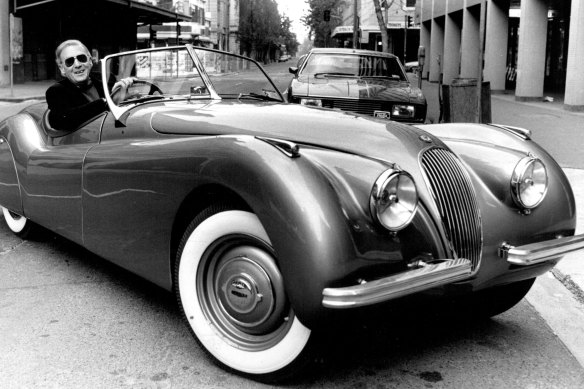
Driving his 1949 Jaguar XK120 and wearing a Superman jumper, Laws returns to 2GB in June 1986, after his fifth operation. Credit: Fairfax
Sydney’s talkback heyday was the ’80s and ’90s, when it was new, empowering (call in and talk to the prime minister!) and everyone had a radio. Its primacy over the following decades owed much to those big stars and their loyal audiences. But this year, when four stalwarts of the AM dial depart, may mark the beginning of the end of 60-odd years of talkback as a political force.
Laws hung up the microphone this month after 71 years. Hadley goes after more than 40 years in December, having lost his first ratings survey in two decades on Thursday. Phillip Adams – who first sat in a studio in 1977 – retired a few months ago, and Richard Glover bows out this month after 28 years at the ABC. (Jones left 2GB in 2020, but his legacy was badly tarnished late last year by accusations he indecently assaulted young men.)
Radio listeners are creatures of habit, and they’ve been listening to those four for decades. “It’s the end of the dinosaur era,” says Carlton. “There were these mythical beasts that roamed the earth, smashing and careering through the joint, and they’re gone.”
The radio (now audio) industry will tell you that reports of its death are greatly exaggerated. “Radio has always demonstrated its resilience and ability to adapt and transform itself,” says Virginia Madsen from the Centre for Media History at Macquarie University. Radio stations are at the crest of the podcast wave, and FM stars (Kyle Sandilands and Jackie “O” Henderson on KIIS, Amanda Keller and Brendan Jones on WSFM) still have hundreds of thousands of listeners.
It’s a bleaker story on the AM dial, the traditional home of talkback. 2GB (owned by Nine, which also owns the Herald) still has an audience share of more than 10 per cent, but it’s on its own. Its one-time arch rival, “radioactive” 2UE, has given up on talk and now plays music. Gone are the days when talk station ABC Sydney, then 2BL, was a threat to its commercial rivals; its overall audience share now sits around 7 per cent. The ABC’s Radio National, poised for a BBC-inspired revival under new chair Kim Williams, now has a smaller audience share (1.8 per cent) in Sydney than ABC’s classical music station.
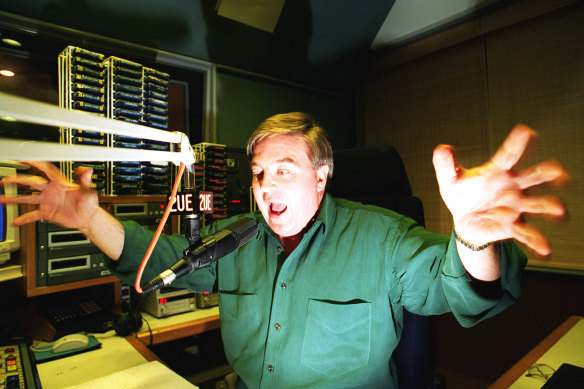
Stan Zemanek (pictured) and Phillip Adams took no prisoners in their public feud.Credit: Joe Castro
The AM talk formula is struggling to reach younger audiences. ABC Sydney’s audience skews older, and 2GB’s even more so; it has a 20 per cent audience share in the 65-plus bracket, but a 2.2 per cent share among people aged 25-39, who prefer listening to KIIS and Nova. Unlike the ABC, 2GB’s line-up is almost entirely male; there’s only one woman, Money News host Deborah Knight, on its main roster. Gender-wise, it’s in the paleolithic era. “It does feel that they [2GB] have given up on using women,” said one radio insider, on the condition of anonymity because they were not authorised to speak. “There’s still the view that older women prefer to listen to men.”
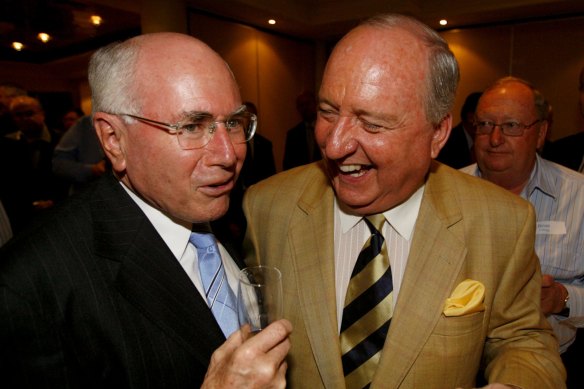
Former PM John Howard with broadcaster Alan Jones, who wielded substantial influence in political circles.Credit: Dallas Kilponen
Like all traditional media, the AM dial is fighting competing demands on listeners’ attention from content streaming, social media and podcasts from all over the world. If young men want right-wing talk, they can listen to America’s most popular podcaster Joe Rogan (the current No.1 podcast on Spotify in Australia) any time of day. Closer to home, talkback hosts such as Jones and Hadley have been outflanked on the right by Sky News and fringe broadcasters. (Australian talkback hasn’t always been right-leaning; some presenters, such as talkback pioneer and politician Barry Jones, were firmly left.)
When researchers at the University of Canberra looked at where Australians got their news this year, they found radio was roughly on par with print media at the bottom of the pile.
Radio’s strengths are that it’s live and local, and listeners develop strong attachments to the presenters. “We’re the Women’s Weekly of the air,” the late radio guru John Brennan once said. But that’s another issue for the industry: when the attachment is disrupted and listeners turn off, it can be hard for stations to get them to turn on again – particularly in a world with so much choice.
Industry insiders say disruption has been a problem at ABC Sydney; the shuffling of presenters has unsettled audiences. One exception has been soon-to-depart Glover, who’s presented the drive program since 1998 (he did two years on mornings first). In the latest survey, published on Thursday, he had the biggest AM audience in the drive timeslot.
Hadley has been doing his show for 20-odd years, too; his fans are attached. “There’s a real sense of unease,” said one 2GB insider, on the condition of anonymity, “about what this is going to mean for his loyal listeners; whether they’ll stay. They tune in to hear what Ray has to say. There’s no obvious successor.”
Succession has always been difficult in key talkback timeslots. It’s more so now, at least for commercial radio. Once upon a time, regional stations provided a valuable apprenticeship and talent pipeline; there are far fewer now. (The ABC still has a wide regional network.)
Hadley may have been plucked from a taxi, but he was already an auctioneer and did 20 years on sport before taking over the morning slot. Ben Fordham, who has a strong following in the 2GB breakfast slot, grew up with Jones; his father, John, was his friend and his brother, Nick, was his manager. He did work experience in radio when he was a schoolboy.
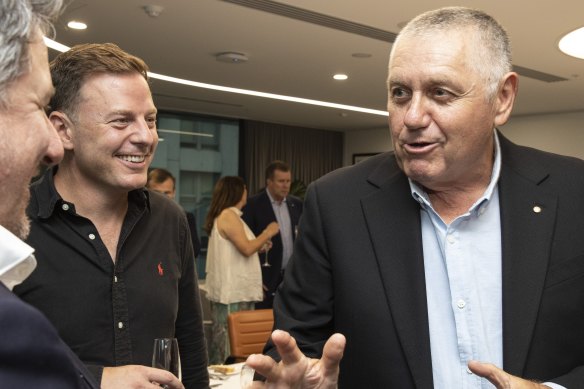
From left: Former Nine chief executive Mike Sneesby and broadcaster Ben Fordham speak to Ray Hadley at a lunch to celebrate his 20 years on 2GB mornings.
This long apprenticeship is useful, as hosting three hours of live talk radio is exhausting, mentally draining, and exposing. Listeners can sniff out uncertainty and dissembling. Projecting personality helps. And in commercial talkback, taking a strong position is everything. It is the “most intimate and most dogmatic of media,” Adams wrote in his book, Emperors of Air. Former US talk-radio executive Dan Shelley once put it this way: “To succeed, a talk-show host must perpetuate the notion that his or her listeners are victims and the host is the vehicle by which they can become empowered.”
One former colleague of short-lived 2GB presenter Jim Wilson says that’s partly why the sports journalist didn’t work on the drive show. “He said he didn’t want anyone to know which way he voted,” they said, “and instantly everyone’s like, what?”
Jones, a former rugby coach, had no problem taking a stand. Nor did Hadley. But neither of them considered themselves journalists. “They were not constrained by any particular form of ethics, where even the most ordinary reporter would have had a twinge,” says Carlton.
That stridency is also key to one of the key ingredients to commercial talkback success; influence. Politicians still worry about what Hadley and Fordham will think. “Hadley won’t like this,” elected ministers of the Crown have been heard to say about proposed policy.
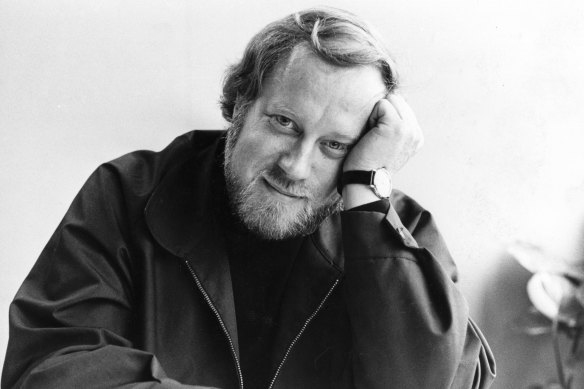
Radio National is getting a revamp just as Phillip Adams (pictured here in 1983) is stepping down. Credit: Fairfax
Changes are coming at 702 and Radio National, after management this year reversed a plan to fold audio into a division with television and instead “reassert radio as a vital part of the ABC’s future”. There’s speculation about a shake-up at ABC Sydney, as it tries to fill the enormous hole left by Glover and reinvigorate its flagging breakfast program. More details are likely next week when the ABC announces its 2025 plans.
There’s also been speculation about how 2GB will adapt for the future. It delivers just 2 per cent of Nine’s earnings before tax. Some think its value lies in its political influence, but that will reduce after Hadley’s departure. A former Nine executive, on the condition of anonymity, says radio is stuck in no-man’s land; it would make more money if it were more right-wing, but that would tarnish the rest of the company.
Hadley’s replacement will signal its direction; radio boss Tom Malone might move drive’s Chris O’Keefe, a highly respected journalist who’s relatively new to radio, he might extend Fordham’s show, or he might make a splash with an outside hire. Former 2GB presenter Jason Morrison’s name has been muttered around the station, although his close association with Jones would ruffle feathers.
Loading
Whatever happens, talkback in Sydney will be tamer from 2025. “When all the taxi drivers and old people die off, I don’t know where AM radio goes,” says Morningstar analyst Brian Han. “Each departure had its own reasons, but when you look at all the linchpins that have held up AM radio in Australia’s history – Jones gone, 2UE no longer talk, John Laws, and now Ray Hadley – that doesn’t paint a good picture for the industry.”
Start the day with a summary of the day’s most important and interesting stories, analysis and insights. Sign up for our Morning Edition newsletter.









 Add Category
Add Category